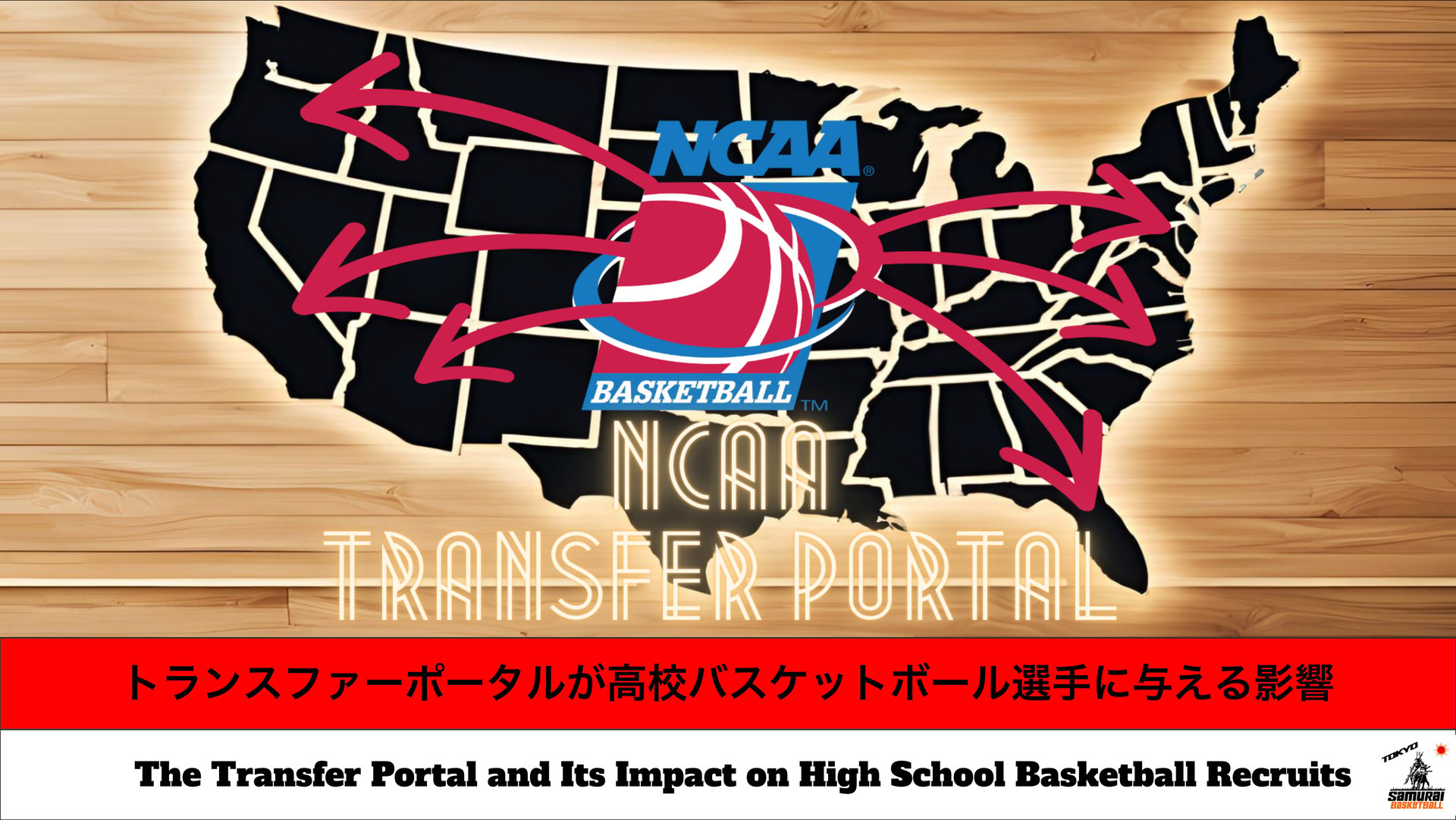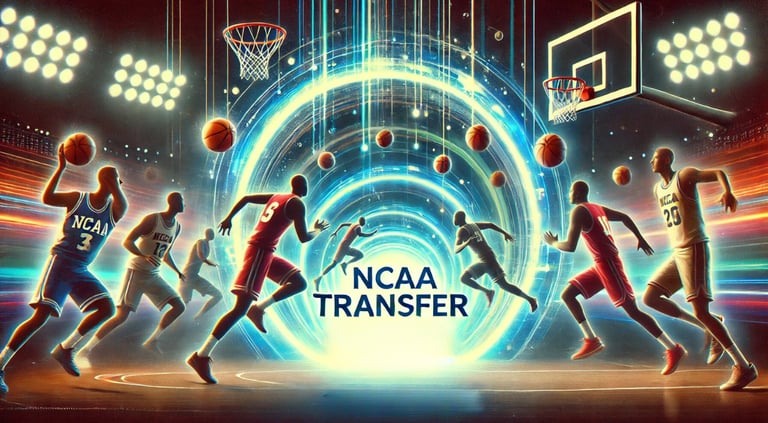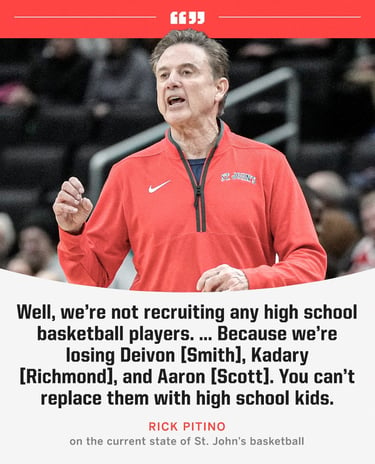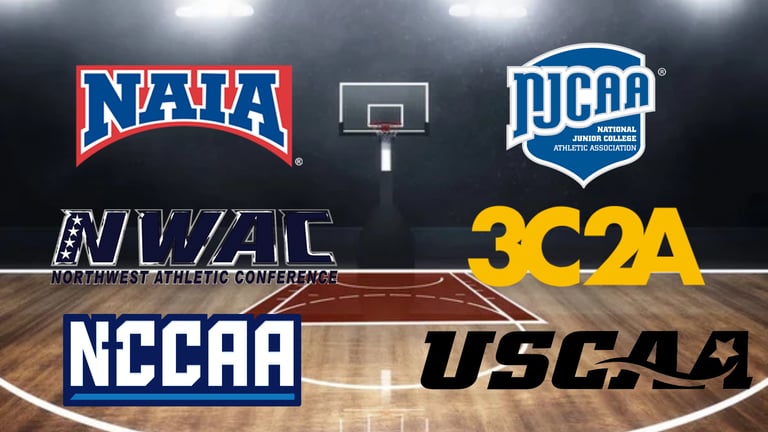
The Transfer Portal and Its Impact on High School Basketball Recruits トランスファーポータルが高校バスケットボール選手に与える影響
2/20/20254 min read


The Transfer Portal and Its Impact on High School Basketball Recruits
トランスファーポータルが高校バスケットボール選手に与える影響
In 2018, the NCAA Transfer Portal was launched and it has had a significant impact on recruiting in college athletics. It’s reshaping the recruiting landscape, roster strategies, and opportunities for players across all levels.
2018年にNCAAトランスファーポータルが導入され、大学スポーツのリクルートに大きな影響を与えています。これはリクルートの構造やチーム編成戦略、選手の機会をあらゆるレベルで変革しています。
Transfer rules prior to 2018, college athletes had to sit out a year before being eligible to play for their new team. While the portal was initially intended to provide college athletes with greater freedom to transfer between schools without sitting out a season, it has created ripple effects that extend well beyond the collegiate level—impacting high school athletes in ways many didn’t anticipate. This, combined with the
The NCAA Transfer Portal is an online database that allows athletes to enter their names and make themselves available for recruitment by other schools. The system was implemented to provide athletes with more control over their careers, offering them the flexibility to leave a program without needing their current coach’s permission or having to sit out a season.
NCAAトランスファーポータルは、アスリートが自分の名前を登録し、他の学校からのリクルートを受けることができるオンラインデータベースです。このシステムは、選手がキャリアをより自由に選択できるようにするために導入され、現在のコーチの許可を得ることなく移籍し、シーズンを休まずにプレーできる柔軟性を提供しています。
What Is the Transfer Portal?
トランスファーポータルとは何か?


The portal has exploded since its inception. According to NCAA data, over 1,600 Division I men’s basketball players entered the portal during the 2023 offseason. With so many players moving around, college coaches now rely heavily on the portal to fill roster spots—a trend that directly impacts high school players trying to break into the college ranks.
ポータル導入以来、その利用は急増しています。NCAAのデータによると、2023年オフシーズンに1,600人以上のディビジョンI男子バスケットボール選手がポータルに登録しました。多くの選手が移籍することで、大学のコーチはロスターを埋めるためにポータルに大きく依存するようになり、これは大学レベルを目指す高校生選手に直接的な影響を与えています。
The Shift in College Recruiting Priorities
大学リクルートの優先順位の変化
Before the rise of the transfer portal, college basketball programs primarily focused on high school athletes to build their teams. Recruiting classes were meticulously planned, sometimes years in advance and high school players had a clear path to earning a scholarship and developing within a program.
トランスファーポータルが登場する以前は、大学バスケットボールプログラムは主に高校生選手を対象にチーム作りを行っていました。リクルートクラスは数年前から慎重に計画され、高校生は奨学金を獲得し、プログラム内で成長する明確な道が用意されていました。
Now, the transfer portal has shifted priorities. A majority of college coaches are choosing to recruit experienced players from other programs rather than taking a chance on unproven high school talent. With transfers, coaches can evaluate a player’s college-level performance, making them a more reliable option than a high school recruit who may take years to develop.
しかし、現在はトランスファーポータルによって優先順位が変わりました。多くの大学コーチは、実績のない高校生選手を採用するよりも、他のプログラムから経験豊富な選手をリクルートすることを選んでいます。移籍選手であれば大学レベルでの実績を確認できるため、高校生リクルートよりも確実性が高い選択肢となるのです。
This shift has been particularly seen at the Division I level, where the stakes are highest. Programs are under immense pressure to win, and the portal offers a quicker solution for filling gaps in the roster. High school players who once might have received offers from Division I schools are now finding themselves overlooked in favor of seasoned transfers.
この変化は特にディビジョンIレベルで顕著です。このレベルでは勝利へのプレッシャーが非常に大きく、ポータルはロスターの穴を素早く埋める手段となっています。その結果、以前ならディビジョンIのオファーを受けていた高校生が、経験豊富な移籍選手を優先する流れの中で見過ごされることが増えています。


How This Impacts High School Athletes
高校生アスリートへの影響
1. Fewer Scholarship Opportunities / 奨学金の機会の減少
The most immediate impact of the transfer portal on high school players is the reduction in available scholarships. With college programs prioritizing filling their rosters with transfers, fewer opportunities are left for high school recruits. This is especially true for fringe Division I prospects, who might now need to consider Division II, NAIA, or junior college options instead.
トランスファーポータルが高校生選手に与える最も直接的な影響は、利用可能な奨学金の減少です。大学のプログラムが移籍選手を優先してロスターを埋めることで、高校生リクルートの機会は減少しています。特にディビジョンIレベルのボーダーラインにいる選手にとっては影響が大きく、ディビジョンII、NAIA、またはジュニアカレッジといった選択肢を検討せざるを得なくなっています。
2. Increased Pressure to Stand Out / 際立つためのプレッシャーの増大
High school players are now competing not only against their peers but also against college athletes with years of experience, with stats and film to back them up. This creates additional pressure to stand out through elite performances, participation in exposure events, and exceptional highlight reels. Players must also develop skills that translate quickly to the college level to attract interest.
高校生選手は今や同世代のライバルだけでなく、実績や試合映像を持つ経験豊富な大学生アスリートとも競争しなければなりません。そのため、ハイレベルなパフォーマンスを発揮し、エクスポージャーイベントに参加し、優れたハイライト映像を作成することがこれまで以上に重要になっています。また、大学レベルで即戦力となるスキルを身につけることも、リクルートの関心を引く上で欠かせません。
3. More Focus on Development Paths / 選手育成ルートへの関心の高まり
4. Greater Importance of Networking / ネットワーキングの重要性の向上
In this new recruiting landscape, connections are more important than ever. Having club coaches, scouts or other third party connections are necessary to ensure players remain on college coaches radars. Building these relationships can help players get noticed, even in a crowded market.
この新しいリクルート環境では、コネクションがこれまで以上に重要になっています。クラブチームのコーチ、スカウト、その他の第三者とのつながりを持つことが、大学コーチのリストに載り続けるために不可欠です。強固なネットワークを築くことで、競争が激しい市場の中でも自分の存在をアピールすることができます。
Advice for High School Players
高校生選手へのアドバイス
While the transfer portal has made the recruiting process more complex, high school players can still navigate it successfully with the right approach. Here are some tips:
トランスファーポータルによってリクルートプロセスは複雑になりましたが、正しいアプローチを取ることで高校生選手も成功を掴むことができます。以下にいくつかのアドバイスを紹介します。
Start Early 早めに準備を始める:
Begin building your recruiting profile early. Create a highlight reel that stands out, attend exposure events, and establish contact with college coaches.
リクルートの準備は早めに始めましょう。目を引くハイライト映像を作成し、エクスポージャーイベントに参加し、大学のコーチと積極的にコンタクトを取りましょう。
Be Realistic 現実的な視点を持つ:
Understand your current level and target schools that match your abilities. With fewer Division I spots available, be open to opportunities at other levels.
自分の現在の実力を正しく理解し、それに合った学校をターゲットにしましょう。ディビジョンIの枠が減少している中で、他のレベルのチャンスにも柔軟に対応することが重要です。
Focus on Development スキルの向上に集中する:
Coaches want players who can make an immediate impact. Work on the skills that translate best to the college game, such as shooting efficiency, basketball IQ, and defensive versatility.
コーチが求めるのは、すぐに戦力となる選手です。シュートの精度、バスケットボールIQ、ディフェンスの汎用性など、大学レベルで通用するスキルの向上に注力しましょう。
Leverage the Portal ポータルを間接的に活用する:
While high school athletes can’t enter the transfer portal directly, they can use it strategically. Playing at a junior college or lower-division program first allows players to gain experience, build their résumés, and potentially transfer up later
高校生選手は直接トランスファーポータルに登録することはできませんが、戦略的に活用することは可能です。まずジュニアカレッジや下位ディビジョンのプログラムで経験を積み、実績を築いた後に、より高いレベルのプログラムへ移籍する道を考えることも有効な戦略です。
Conclusion
結論
The NCAA Transfer Portal has undoubtedly changed the landscape of college basketball recruiting. While it offers new opportunities for collegiate athletes, it also creates challenges for high school players striving to make their mark. By understanding these dynamics and adapting their approach, high school athletes can still find pathways to success. Hard work, preparation, and strategic planning remain key in navigating this evolving system and achieving their basketball dreams.
NCAAトランスファーポータルは、大学バスケットボールのリクルート環境を確実に変えました。これは大学アスリートに新たな機会を提供する一方で、高校生選手にとっては大きな課題を生み出しています。しかし、この変化を理解し、適切なアプローチを取ることで、高校生選手も成功への道を見つけることができます。努力、準備、そして戦略的な計画が、この進化するシステムを乗り越え、バスケットボールの夢を実現する鍵となるのです。
implementation of Name, Image, and Likeness (NIL), has dramatically shifted the landscape of college recruiting. While NIL’s full impact deserves its own discussion, it has contributed to a system where college programs prioritize immediate impact players—further complicating the path for high school recruits.
2018年以前の移籍ルールでは、大学のアスリートは新しいチームでプレーする前に1年間の待機期間が必要でした。このポータルは、大学アスリートがシーズンを休まずに自由に移籍できるようにするために導入されましたが、その影響は大学レベルを超えて広がり、多くの高校生アスリートにも予想外の影響を及ぼしています。さらに、名前・肖像・収益権(NIL)の導入と相まって、大学リクルートの状況は劇的に変化しました。NILの影響は別の議論に値しますが、この制度により大学プログラムが即戦力の選手を優先する傾向が強まり、高校生リクルートにとってより厳しい状況が生まれています。


As direct paths to Division I become more challenging, many high school athletes are exploring alternative development routes. Options like prep schools, junior colleges, and international professional opportunities are becoming more popular. These pathways allow players to develop their game further and stay visible to college recruiters.
ディビジョンIへの直接的な道が険しくなる中、多くの高校生アスリートが別の育成ルートを模索しています。プレップスクール、ジュニアカレッジ、さらには海外のプロリーグといった選択肢がますます人気を集めています。これらのルートを活用することで、選手はスキルをさらに向上させ、大学リクルーターの目に留まる機会を増やすことができます。
